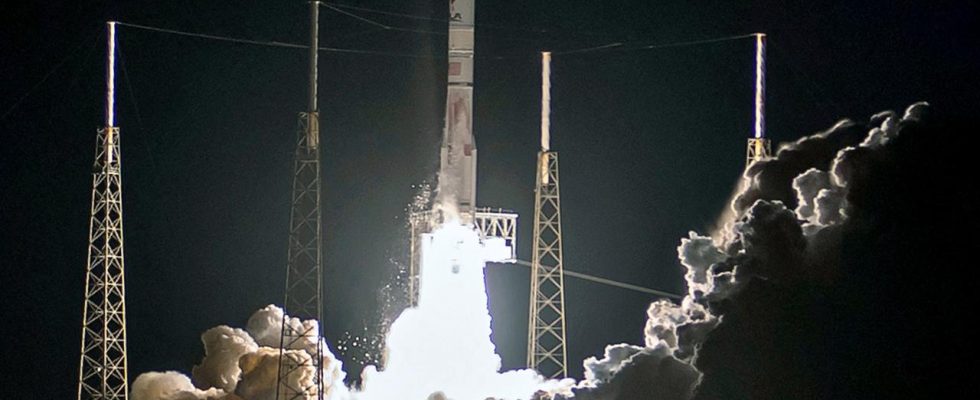For the first time in over 50 years, a mission to the moon has launched in the USA. But the private lunar module has technical problems. According to operator Astrobotic, the ferry could not take the desired position towards the sun.
According to the company, there was a malfunction shortly after the start of a US mission with the aim of the first successful commercial landing on the moon. Initially, the start went as planned and the systems worked as expected, said the Pittsburgh company Astrobotic.
“Unfortunately, there was then a malfunction that prevented the ferry from assuming a stable position facing the sun.” The team is responding to the situation and will provide further information as soon as it becomes available, it said. The lander “Peregrine” was launched from the Cape Canaveral spaceport in the morning on board a “Vulcan Centaur” rocket from the manufacturer ULA.
The capsule was supposed to land on Earth’s satellite at the end of February in an area called Sinus Viscositatis (Bay of Stickiness) and complete the first – unmanned – US moon landing since the Apollo mission over 50 years ago.
The cargo flight to the moon was the first of several such flights planned for 2024. The lunar lander required for this was financed by the American space agency NASA, but is a development and property of the private US space company Astrobotic. The Peregrine lander carries scientific equipment, engineering experiments and commercial cargo from several countries.
What is “Peregrine” exactly?
The lander “Peregrine” – in German “peregrine falcon” – is a type of truck for transport to the moon. People cannot be transported with this spacecraft, but scientific measuring instruments, technical equipment, robots or even objects that companies want to place on the moon for very different reasons and business interests.
The lunar lander is two meters high and 2.5 meters wide. “Peregrine” lands on four legs, braked by rocket engines. These legs support a platform on which a total of 21 different “packages” are mounted.
But unlike the terrestrial parcel delivery company, the cargo items are not distributed after landing, but remain on board or are placed on the lunar surface in the immediate vicinity of the lander – small robots and rovers, for example.
Peregrine stays on the moon
Another difference to the freight forwarding truck: Peregrine is a disposable transporter. After landing, the device remains on the lunar surface and does not return to Earth. An Earth-Moon shuttle service is therefore not possible.
A model of the lunar lander “Hakuto-R”
Faulty ones Height calculation in “Peregrine Mission 1”
In April 2023, a Japanese company failed in a similar mission. The company Ispace gave the reason for the lander’s incorrect altitude calculation during the landing attempt. With the “Peregrine Mission 1” private individuals were able to buy space to transport material to the moon in the lander, which is 1.9 meters high and has a diameter of 2.5 meters.
The US space agency NASA also wants to prepare its own expeditions to Earth’s companions with several devices on the journey. NASA would like to examine, among other things, the lunar exosphere during the mission. In addition, thermal properties and the hydrogen content of the material on the lunar surface (regolith) will be investigated.
Uwe Gradwohl, SWR, tagesschau, January 7th, 2024 6:46 a.m

